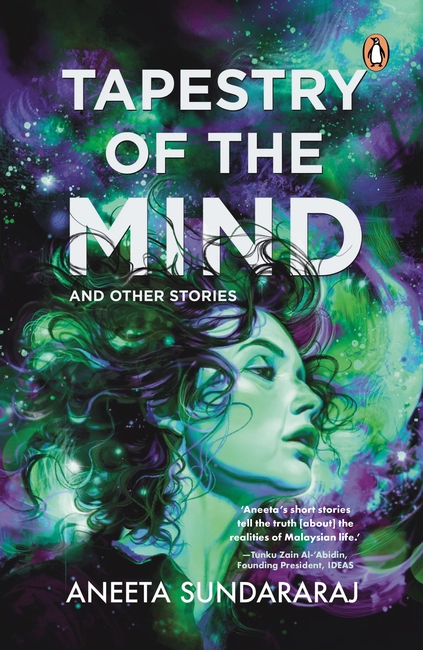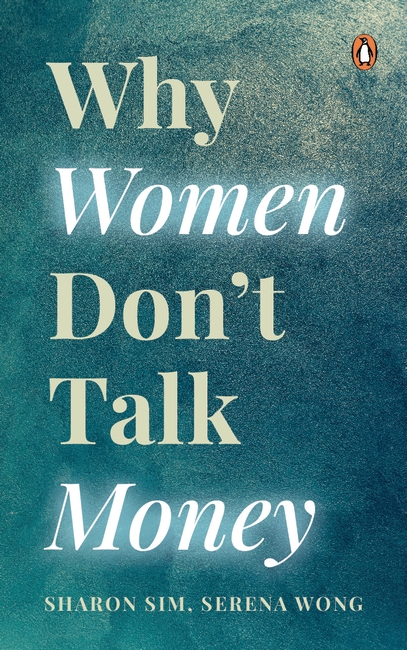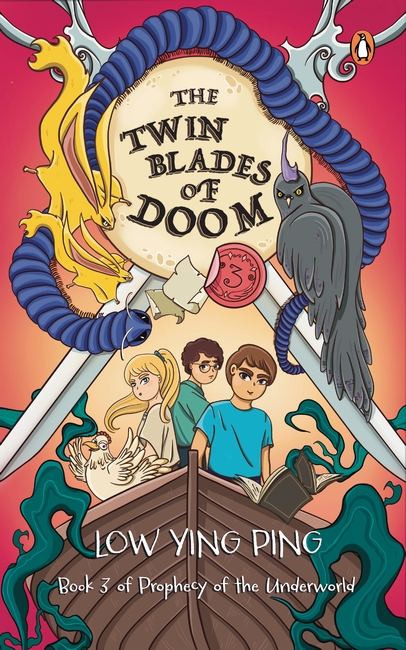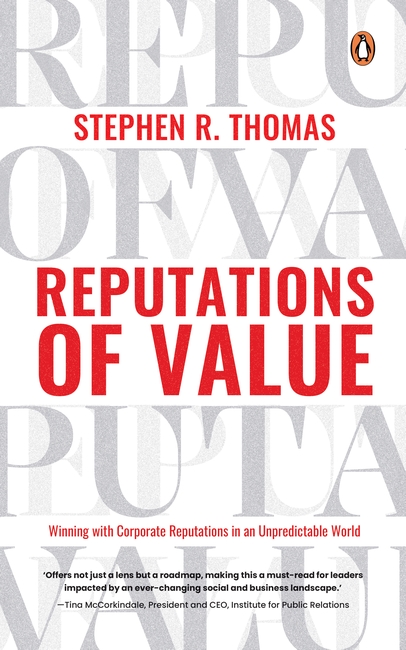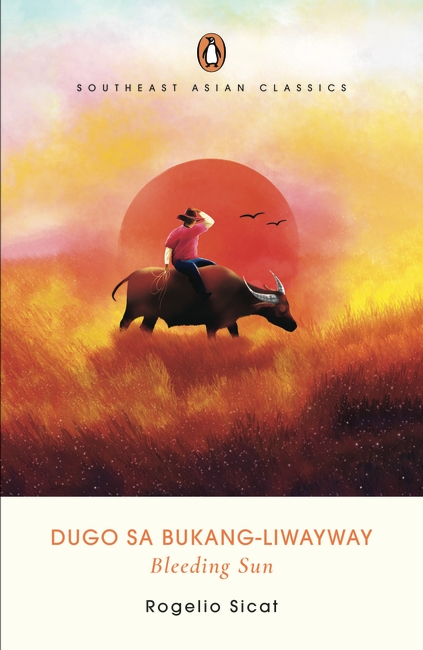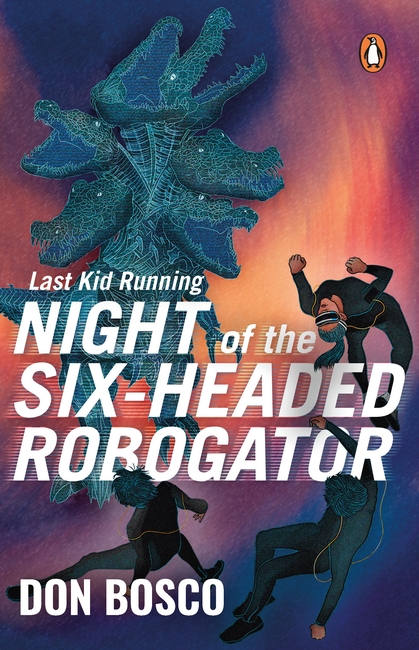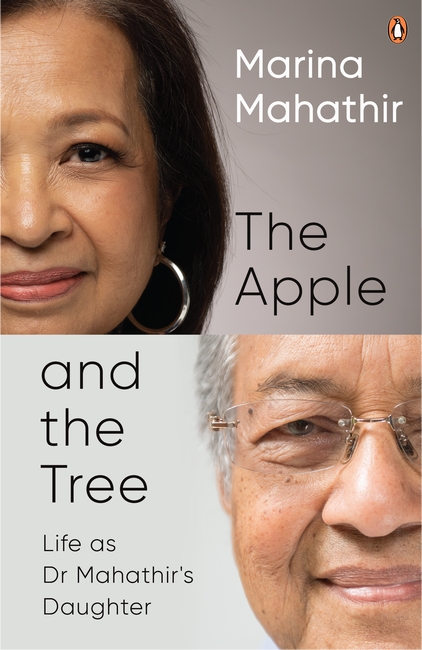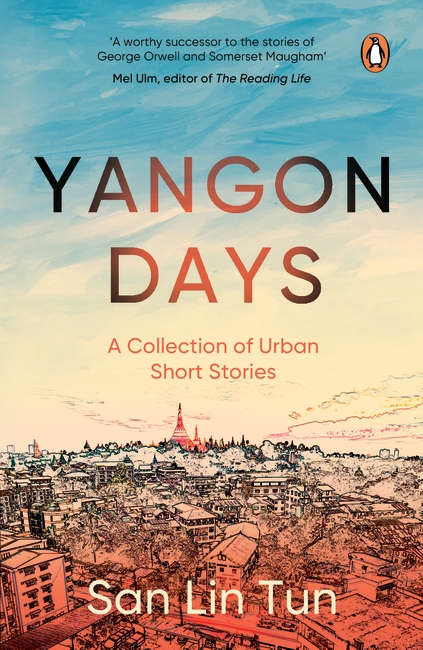Tapestry of the Mind is best described as the writer’s literary love affair with trying to make sense of the human psyche. It is a collection of seventeen fully-developed short stories that are serious, funny, tender and grounded in Malaysia and, in particular Aneeta Sundararaj’s hometown of Alor Setar in northern Peninsular Malaysia.
The reader moves among a diverse range of protagonists from classical Indian dancers, toddlers engaging with spirits, pet therapy, mothers losing their children because of inequitable laws and the manipulation of the metaverse, men lacking self-worth, and divorcees mulling failed marriages, to probable stigma of homosexuality, narcissism, mean adults, sibling rivalry, bullying, spiritual abuse, clandestine adoptions, autism, environmental disasters, men’s regret from love lost, and the destruction of the mission schools.
Like all love affairs, specific and unique cultural, ethnic and religious differences gave rise to moments of betrayal, poignancy, heartache and, sometimes, much mirth. Ultimately, this haunting collection pieces together an everlasting tapestry of words rooted in brutal honesty. When viewed as a whole, it brings to light issues long avoided, evaded or hidden. With each story prefaced by a quote from an expert in mental health, Tapestry of the Mind is cradled with gravitas.
Archives: Books
Why Women Don’t Talk Money
Society is uncomfortable with two factors: women in power, and women with money. But, why is that so? Despite the societal advancements the world has made since universal suffrage, women are still uncomfortable discussing money matters with their partners and peers.
In this book, 24 powerful women bare their souls to finance professionals Sharon Sim and Serena Wong about their struggles with making money and keeping it, their sometimes uncomfortable relationship with the all-powerful dollar, and how they’ve come to terms with, even celebrate, their financial and personal status in the world.
The Twin Blades of Doom
Julian Kee and his friends have already saved the Underworld twice from destruction and chaos. Can they do it a third time?
In his misguided attempts to harness the power of technology, the children’s erstwhile mentor Wuchiwark has unleashed a blight across the Underworld, causing the plants and animals to mutate into fearsome beasts. Only the legendary Twin Blades of Doom can undo the curse, so off the children are sent on yet another thrilling adventure! However, firmly believing that being a hero should be a once-in-a-lifetime experience, and not a permanent job, Julian hatches a daring plot which, if successful, will resolve the Underworld’s problems once and for all.
This third book in the Prophecy of the Underworld series continues to serve up much fun and laughter about adventures, heroes and the crazy world of publishing!
Reputations of Value
Companies today operate in an era characterised by volatility, crisis, lack of trust and intense scrutiny. People have a growing expectation that the private sector not only markets a particular product or service but also takes an active role in making broader contributions to society. The spotlight has never shone more fiercely on what companies say—and do.
Yet, a significant number of companies grapple with the challenge of proactively earning and safeguarding their multifaceted reputations. The stakes are higher than ever, as the trajectory of a company’s growth is intricately linked to its ability to strategically enhance its standing in the eyes of stakeholders – including investors, customers, employees, regulators and activists.
Reputations of Value examines the profound impact of corporate reputations on any company’s ability to advance its business agenda over time. The book features insights from subject matter experts around the world. It serves as a guide for those wanting to better understand how companies can operate on a stronger, more resilient, and authentic basis in the face of a dynamic and unpredictable landscape.
Bleeding Sun
Bleeding Sun is a novel about agrarian reform but it is also the story of Simon, a farmer’s son, who is born in the poorest province. He grows up with no mother, his father dies after he graduates from high school, falls in love with a socialite, runs away from home and returns with a silent vengeance.
The Dao of Flow
Jin Young Lim was studying ancient philosophy when he delved into a philosophical investigation of his life to date – from his humanitarian work in Fukushima to studying in Tokyo, becoming a yoga teacher and Taijiquan instructor, and co-founding a non-profit in the Himalayas before moving to Beijing as a Schwarzman Scholar. Along the way, Jin Young met scholars, teachers, artists, philosophers, farmers, social workers, and spiritual leaders. In this book, he weaves classical texts into his experiences with Taijiquan, Daoism and Zen, tea, agriculture, conservation, art, history, geography, politics, and social economics. He captures his physical, intellectual, and spiritual journey in a series of incisive reflections, vignettes, and anecdotes that make it accessible in simple terms. Through these stories, Jin Young constructs a philosophical framework of Daoist principles that he calls ‘The Dao of Flow’ — a way of continuous transformation based on embodying, flowing, and regulating water. These same three principles recurred as patterns in the lives of his role models or ‘walking flowers’ – those who ‘walk the flow’ and do so beautifully and naturally like flowers. This book is an invitation to discover the wisdom of water and provides readers with a novel spiritual map to deeper harmony with oneself and the world.
Last Kid Running
Welcome to Book 2 of the thrilling LAST KID RUNNING gamebook series, where YOU decide how the story unfolds. You are Runner X, one of six eager contestants on the biggest reality show streaming on the mobile web.
This time, you’re taken to a secret venue in Indonesia. The enigmatic Dr Yamato has created a massive Run Dome filled with crazy technological inventions to challenge you and amuse his viewers.
You’re prepared to face anything, even the intimidating Six Headed Robogator. But the night gets creepy. And you can’t help feeling that the Run Dome hides a nasty surprise in its shadows.
Will you be too overwhelmed to outrun the others? Or do you have what it takes to be the LAST KID RUNNING? Quick, open the book and find out!
The Apple and the Tree
When an apple falls, does it roll far or stay close to its tree?
Is it an exact clone of all the other apples the tree produces or something entirely different?
This is the question that has perplexed the public about Marina for the simple reason that she is the daughter of the man who has governed Malaysia for almost twenty-four years. Does she echo him in his view of the world, or does she chart her own path?
Why is it that in her own public life, in her writing and speeches, she expresses opinions that seem to contradict his?
This book hopes to detail how she has navigated her life as the daughter of a charismatic politician and a loving father, even as sometimes she has chafed at being constantly under his shadow. It talks about how she has struggled to find her own identity, to defend her worldview at times and to reconcile them with his at others.
She tells the story of growing up as the daughter of Malaysia’s most influential leader, from the values instilled in her as a child, right up to the day he was forced to step down as the 7th Prime Minister after leading the historic ouster of the government he used to lead.
Duxton Hill
Set against the backdrop of an aging boutique hotel, once a jewel of elegance in the heart of Singapore’s Duxton Hill, a tropical rain storm brings together two unlikely singles, Clara Tan and Nicholas Tate. Their personalities and cultural backgrounds at first seem at complete odds. Unbeknown to them, their futures are very much aligned. Through the twists and turns of a potential relationship, and the trials and tribulations of sorrow, love, friendship, courage and the Duxton Hotel’s fight for survival, Clara discovers that her tendency to fall in love too fast for every single male she encounters, needs some adjustment.
Her life is about to completely turn upside down when she inherits the hotel from its billionaire owner Mr Chan, but through having to lead and re-brand the hotel towards its new beginning, she inadvertently overcomes a sensitive and socially difficult medical condition. In the meantime, her love for Nicholas develops, deepens and blossoms as a result of her new found confidence, on which a new life and hotel empire begins.
Yangon Days
Yangon, previously known as Rangoon, is the former capital of Myanmar (Burma) and one of the major commercial cities in Southeast Asia. Moreover, it stands out among its neighboring cities, such as Bangkok, Phnom Penh, Hanoi, Kuala Lumpur, and Singapore, and is regarded as a well-structured and booming city. The influx of people is constant, with individuals coming and going through the city. Even famous international literary luminaries, such as Rudyard Kipling, Rabindranath Tagore, George Orwell, Pablo Neruda, and Somerset Maugham, once visited, stayed, and enjoyed Rangoon’s vibrant life.
Yangon has become a home for many people, both locals and expats, who seek jobs, success, a new life, good food, and good housing. While most Yangon residents gain success and prosperity from what the commercial city has to offer, some encounter failures and frustrations. However, a city is a city, amiably welcoming those who seek refuge in its bountifulness.
These twenty-six stories revolve around people, especially ordinary individuals, living in the city of Yangon. They depict their delight, empathy, follies, and humanness through their daily and family lives. “Yangon Days” is about them.
The book is intended for general readers, especially teenagers and adults living in Southeast Asia and beyond. By reading these stories, they will become more familiar with Yangon and its charming people, gaining insights into how the city offers and treats its residents.






